If the Grid Went Down Tomorrow, Would Your Truck Survive?
In a world where instability is the new norm, a growing number of high-performance men are transforming old, forgotten trucks into tactical machines ready for anything. These aren’t showpieces—they’re mobile fortresses built with purpose: bug-out vehicles for survival, off-grid rigs for escape, and masculine masterpieces for self-reliance.
Welcome to the masculine art of DIY tactical vehicle builds—a gritty, creative, and hyper-functional intersection of automotive obsession, survival strategy, and maker culture.
Let’s break down 10 builds, their core features, and how you can start crafting your own.
Table of Contents
1. The Urban Extraction Rig (Jeep Cherokee XJ Build)
Best For: Urban escape routes and tight environments
Base Vehicle: Jeep Cherokee XJ (1997–2001)
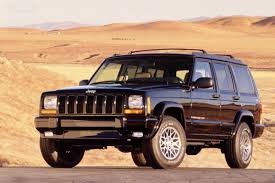
Lightweight, nimble, and built to maneuver around wreckage and traffic, this build is perfect for city dwellers. Outfitted with:
- Roof-mounted LED light bar
- Underbody armor plating
- CB radio with rooftop antenna
- MOLLE panels for quick-access tools
Pro Tip: Replace the stock suspension with a 3” lift kit and reinforce your control arms. You’ll thank yourself when the asphalt ends.
2. The Desert Ghost (Toyota Tacoma Long Bed)
Best For: Heat-heavy environments and desert bug-out
Base Vehicle: Toyota Tacoma (2005–2015)
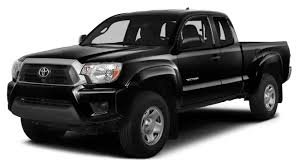
This beast thrives in the dust. Think:
- Sand tires with deflation valves
- 40-gallon water tank with inline UV purifier
- Roof rack for extra jerry cans
- Portable awning and fold-out solar panels
Tactical Hack: Paint the undercarriage matte tan. Reflects less heat and helps blend into arid terrain.
3. The Forest Phantom (Chevy Suburban Overlander)
Best For: Forest survival and rural retreat
Base Vehicle: Chevrolet Suburban (2000–2006)
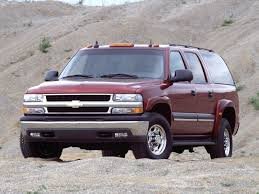
The Suburban’s cavernous space is ideal for modular builds:
- Fold-flat sleeping platform with under-storage
- Wood-burning stove vented out the side
- Dual battery setup (AGM or lithium)
- HAM radio with backup antennas
DIY Tip: Soundproof the cabin with foam insulation for warmth and stealth camping.
4. The EMP-Proof Classic (1985 Ford Bronco)
Best For: Post-EMP survival with no electronics
Base Vehicle: 1980s Ford Bronco (carbureted engine, no ECU)
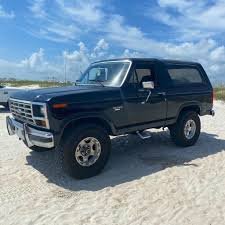
Modern vehicles are vulnerable to EMPs—but not this old-school beast:
- Manual windows and locks
- Rebuilt carburetor
- Aluminum Faraday box behind the seat
- Tools, spares, and a preloaded paper map atlas
Survival Insight: Old-school builds are easier to repair off-grid. No diagnostics needed.
5. The Water Warrior (Toyota Land Cruiser + Amphibious Add-ons)
Best For: Flood zones, swamp terrain
Base Vehicle: Toyota Land Cruiser 80 Series
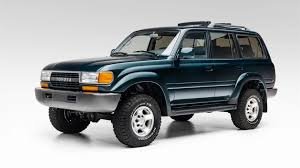
This hybrid build includes:
- Water snorkel for engine intake
- Inflatable tire floats
- Rubber-sealed cargo bed
- Emergency inflatable raft
Must-Have: Compact bilge pump for clearing cabin floodwater.
6. The Arctic Sentinel (Ford F-250 Super Duty Diesel)
Best For: Cold climate, deep snow, frozen terrain
Base Vehicle: Ford F-250 Super Duty (Diesel, pre-2007 for fewer electronics)
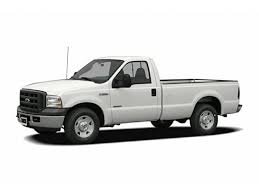
Designed for harsh winters:
- Diesel heater system for cab and engine block
- Snow chains + studded tires
- High-lumen LED floodlights
- Heavy insulation + auxiliary battery heating
Build Insight: Store extra diesel in treated jerry cans—diesel is more stable in freezing temps.
7. The Recon Raptor (Ford Raptor Tactical Edition)
Best For: Rapid response, tactical navigation
Base Vehicle: Ford Raptor (2012–2020)
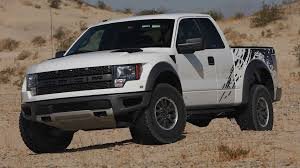
This one’s for those who want performance and muscle:
- FLIR (Forward-Looking Infrared) camera mounted to dash
- Drone storage and quick-launch system
- Mobile Wi-Fi repeater
- Lockbox in bed with AR15 + sidearm storage
Legal Note: Always follow local and state laws with weapon storage.
8. The Nomadic Basecamp (Sprinter Van Stealth Tactical)
Best For: Long-term off-grid living with stealth
Base Vehicle: Mercedes Sprinter Van (4×4 or RWD)
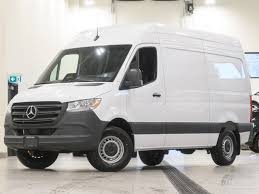
Designed for quiet, mobile living:
- Foldable bed/kitchen/lavatory setup
- Solar roof array with battery bank
- Blackout curtains + IR-blocking tint
- External fuel tank for 800+ mile range
Tactical Bonus: Stealthy exterior—no decals, no flash, all function.
9. The Gas Guzzler Turned Survivalist (Chevy Silverado Hybrid Conversion)
Best For: Eco-conscious preppers
Base Vehicle: Chevrolet Silverado + aftermarket hybrid kit
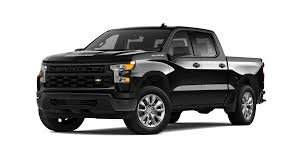
Convert a V8 guzzler into a lean hybrid warrior:
- Electric motor with regenerative braking
- Bed-mounted solar charging for auxiliary systems
- Removable camper shell
- Fold-out workbench + tool station
Good Move: Get the dual-fuel upgrade—gasoline and propane mix extends your mobility options.
10. The Beast from the Junkyard (Frankenstein Build)
Best For: Tinkerers and true makers
Base Vehicle: Whatever you can get your hands on
Combine parts from:
- An old ambulance (power system)
- Military Humvee (armor and tires)
- RV (water and HVAC systems)
- Pickup (chassis)
Freedom Feature: No rules. No limits. Just whatever works.
Modular Truck Beds: The Tactical Swiss Army Knife
No matter your build, the bed of your truck is prime real estate. Equip it with:
- Slide-out kitchen
- Lockable gun storage
- Pull-out tool chest
- Vertical garden (yes, you read that right)
Use steel frame kits or DIY with aluminum and marine plywood.
On-Wheel Water Purification: Clean Water Anywhere
A top-tier survival vehicle always carries:
- 30-50 gallon freshwater tank
- Inline gravity-fed filter (e.g., Berkey)
- Electric UV light filter
- Collapsible rain collection system on the roof
Always: Secure the tanks below center of gravity to avoid rollover risks.
Solar, Comms & Power Independence
Every tactical build should include:
- 300W+ solar array
- Deep-cycle batteries
- Power inverter for AC/DC
- Redundant comms: HAM radio, CB, sat-phone
This makes your truck a mobile command center.
Avoid These Rookie Mistakes
- Overbuilding without testing:
Heavy doesn’t mean better. Field test every mod. - Ignoring balance and weight distribution:
Uneven weight = rollovers. Always measure. - Skipping stealth:
Loud paint jobs, bright lights, and chrome trim draw attention. - Poor organization:
If you can’t access your gear in 10 seconds, you’re vulnerable.
🧠 FAQ – DIY Tactical Vehicle Builds
What is a DIY tactical vehicle build?
A self-made, rugged vehicle customized for survival, off-roading, and emergency use.
What’s the best base vehicle to start with?
Reliable pickups like the Toyota Tacoma, Ford F-250, and Jeep Cherokee are top picks.
Do I need mechanical skills?
Basic skills help, but many builds are bolt-on friendly or can be outsourced.
Is it legal to modify my truck like this?
Yes, but check local laws for weapon storage, lighting, and emissions.
Can I live in a tactical vehicle full-time?
Absolutely—with the right build (solar, water, HVAC), it’s like a mobile cabin.
How much does a full build cost?
Anywhere from $5,000 (bare-bones) to $50,000+ depending on gear and upgrades.
What about EMP protection?
Use older, analog vehicles and store comms in Faraday containers.
Do I need a winch or just good tires?
Both. Winches get you out of deep terrain, but traction is your first line.
What’s the first mod to start with?
Tires and suspension. Everything else builds on that.
How can I power my gear off-grid?
Use solar panels and a dual battery bank with an inverter.
Are diesel or gas engines better?
Diesel is better for torque, fuel efficiency, and storage.
Can I use my bug-out vehicle daily?
Yes, just keep it street legal and lightweight.
What’s a modular truck bed?
A customizable system with storage, sleeping, and utility options.
Should I armor my vehicle?
Light armor can help, but focus on mobility first.
Can I filter dirty river water onboard?
Yes—with gravity filters, UV lights, and carbon filters.
What tools should I always carry?
Socket set, tire inflator, jumper cables, multitool, axe, recovery straps.
What’s the best communication setup?
HAM radio + CB radio + satellite messenger = redundancy.
Can I build a stealth tactical van instead of a truck?
Yes. Vans offer more indoor space and low-profile movement.
Is rooftop solar enough?
For lights and gadgets—yes. For cooking and A/C—get a generator.
How do I keep my build organized?
Use labeled bins, MOLLE panels, and drawer slides for efficiency.
How do I protect my gear from theft in a bug-out vehicle?
Use lockboxes, hidden compartments, alarm systems, and tinted windows to deter thieves.
What’s the ideal fuel range for a survival vehicle?
Aim for at least 500–800 miles on a full tank (plus reserves in jerry cans).
Can I convert a school bus or RV into a tactical vehicle?
Yes, but it’s harder to maneuver and less stealthy. Great for long-term off-grid use.
What’s a Faraday cage and why do I need one?
It protects electronic gear from EMP blasts. Use one for radios, GPS, and power banks.
What kind of lighting should I install?
Install exterior LED floodlights, red interior lights (for night ops), and blackout switches.
What’s the best tire size for off-road builds?
33–35” tires offer great clearance without overly straining your drivetrain.
Should I keep a fire extinguisher onboard?
Absolutely. A Class B-C fire extinguisher is essential for electrical and fuel fires.
How can I build a sleeping setup inside my truck?
Install a foldable platform with mattress foam, drawers underneath, and blackout curtains.
What’s the best paint or wrap for stealth?
Matte colors like olive drab, tan, or grey with low-reflection finishes are ideal.
Can I use marine or RV parts in my build?
Yes—water pumps, battery banks, heaters, and toilets from RVs/marines are rugged and modular.
How do I winterize my tactical vehicle?
Add insulation, diesel heaters, thermal curtains, and keep emergency de-icing gear.
What’s the best air filtration system for dusty or smoky conditions?
Use HEPA cabin filters, sealed ventilation, or portable air purifiers.
33. Can I run a fridge in a tactical build?
Yes, with a solar setup and battery bank you can power a 12V fridge or cooler.
34. What kind of weapons storage is ideal?
Hidden gun safes, bed-mounted lockboxes, and dashboard quick-access mounts.
What type of suspension should I upgrade to?
Go for off-road-rated shocks, leaf springs, and sway bar disconnects.
How do I maintain stealth when camping in urban areas?
Use blackout curtains, avoid idling, and park in discreet locations.
What apps or tools should I use for off-grid navigation?
Offline maps like Gaia GPS, OnX Offroad, or old-school paper topography maps.
Should I carry spare parts?
Yes—belts, hoses, spark plugs, fuses, and fluids are lifesavers during breakdowns.
How can I make my vehicle more fuel-efficient?
Reduce weight, streamline roof loads, keep tires properly inflated, and tune the engine.
Can I run a tactical vehicle on alternative fuels?
Yes—propane, biodiesel, and even wood gas conversions exist, though they’re advanced builds.
🔥 Gear Up & Get Building
Prepping is no longer fringe—it’s necessary. Whether you’re anticipating a blackout, societal collapse, or just want to live with more autonomy, your vehicle can be more than transport. It can be a home, a weapon, a fortress, and a statement.
You don’t need to be a mechanic or a millionaire. Just a man with a mission, a few tools, and the willingness to build.
👉 Start your DIY tactical vehicle build today. Because when the system fails, only the self-reliant roll forward. Subscribe to MindGearMen.


